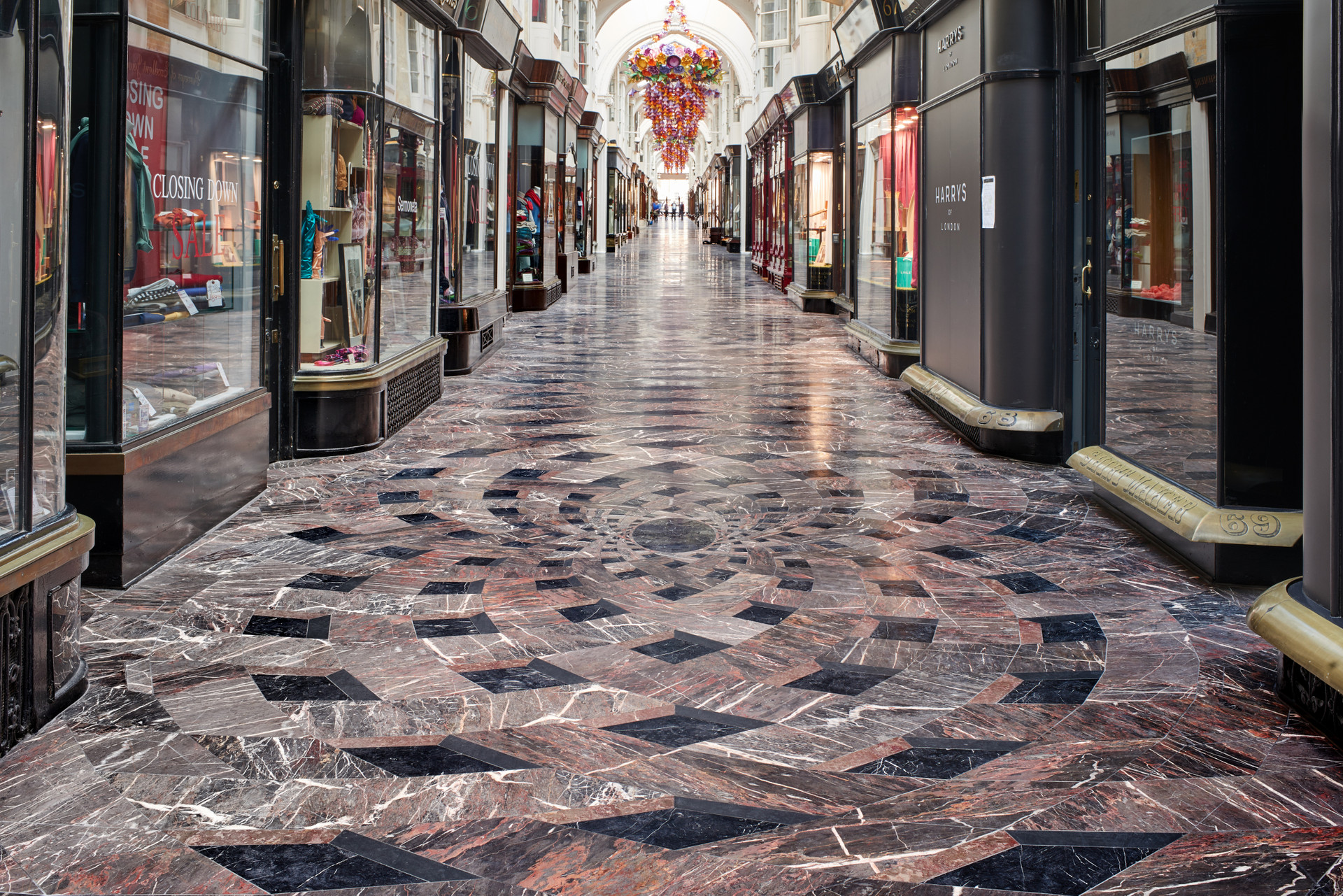Burlington Arcade
Originally paved with thick slabs of “York Stone”, the floor of the Burlington Arcade today is paved with marble Margraf

Nestled between New Bond Street and the Royal Academy, the Burlington Arcade, commissioned by Lord George Cavendish and designed by Samuel Ware, was completed in 1819. Throughout its 196-year history, the Burlington Arcade has undergone various renovations without altering its original appearance. Inside, 72 boutiques of prestigious international brands offer the best of their collections for a discerning and refined clientele.
Originally paved with ‘York Stone’ slabs, the gallery’s floor was replaced in 1960 and again in 1990 with a rather jarring terrazzo tile. After numerous protests, the owner Meyer Bergman entrusted Jamie Fobert Architects with the renovation work.
Margraf was selected as an excellent partner for this challenge, thanks to its advanced water jet cutting technology. After months of research, a design inspired by the arches of the gallery was created, using four British gray stones cut into 64,000 pieces.
Margraf’s expertise and technology handled all phases, from cutting to pre-installation, creating a three-dimensional geometric floor. Margraf produced 15,000 linear meters of marble cut with water jet and approximately 100 square meters of flooring, covering the 200-meter length of the Burlington Arcade. A total of 150 tons of worked marble were used, with 8 weeks of cutting and 4 months for the floor installation.
Technical informations
-
Location: London, United Kingdom
-
Project: Jamie Fobert Architects
-
Quantity: 150 tons
Gallery



